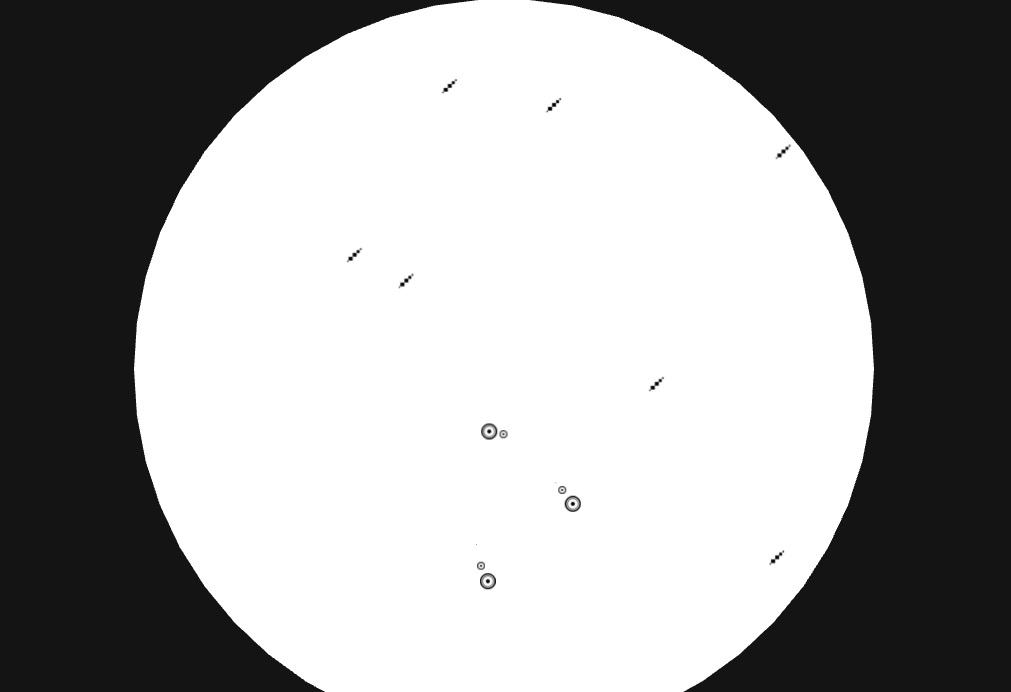BA Fine Art student Daniel Bandfield is currently busily working on his end of year work, a digital art installation. We caught up with Daniel to find out what he has been working on and his thoughts on studying at Chelsea for three years.
Hi Daniel, where are you from?
Poole in Dorset, England.
Describe your experience at Chelsea in 3 words.
Exciting, Difficult, Stimulating
What have you been working on for your final show?
I am creating a digital installation that incorporates aspects of artificial life and artificial intelligence. I am creating a simulation of microscopic organisms which is watched by a robot/machine with cameras for eyes. Whenever the micro-organisms die, the machine will recognise them using object detection, and start pumping blood through its organs. The installation will visually be a melding of the organic and the artificial.
I’m interested in the emergent properties of intelligent systems and what it means for a machine to have an experience beyond its use as a tool. I also like to use technology to play with the role of the audience in the art work. In this case I wanted to create an installation which the viewer might feel excluded from, as if the machines inhabited a world not meant for people.
What has been your greatest challenge so far in working towards the degree show?
It’s important to me to constantly be experimenting with new ways of making art and on every project I try to learn new skills. For my current project I have been learning to train object detection software. While it is no doubt a fascinating subject, it is quite technical, and as with any technical way of making art, it is easy to lose sight of the content of the art work. For me, the greatest challenge is balancing the amount of time I spend making technical decisions and time I spend making creative decisions.
What do you see yourself doing after you graduate, what are your career ambitions?
I would like to continue to pursue my interests in AI and art as much as I can. Ideally, I would like to be involved in interaction design as I think this is the most exciting confluence of art and technology.
I have also been running workshops teaching people how to code and create electronics in an artistic context, as I think there are too few resources available for art students to learn how to create digital art. I would like to continue these.
What have you enjoyed most about studying at Chelsea?
The freedom to structure my own studies and follow my own interests has been really helpful. I initially found it confusing and frustrating, but it has proved exciting and important for building confidence in my practice. There are a myriad of ways to create art, and I like that at Chelsea you are encouraged to find your own niche, even if it is weird.
What have you most enjoyed about the area around Chelsea? Any tips?
Well… it’s central London! There are hundreds of art galleries less than half an hour away so there’s always inspiring new art to experience. There are downsides to studying art in London, but the sheer amount of culture is one of the most compelling reasons to be here.
What would you say to someone who is thinking about doing your course? Any advice?
Try to spend as much time as you can in the studio. It can sometimes be a distracting place to work in, but the conversations you have with other people are rewarding, and one of the most important resources available to you. The Fine Art course at Chelsea is larger than most others, with over 100 students per year, so there’s a large range of different ideas, viewpoints and practices. Make the most of the community your are in!
You can see more of Daniel’s work on his website, Facebook and Instagram.
Find out more about our BA Fine Art course.
See more of out students’ work at the Degree Show.





